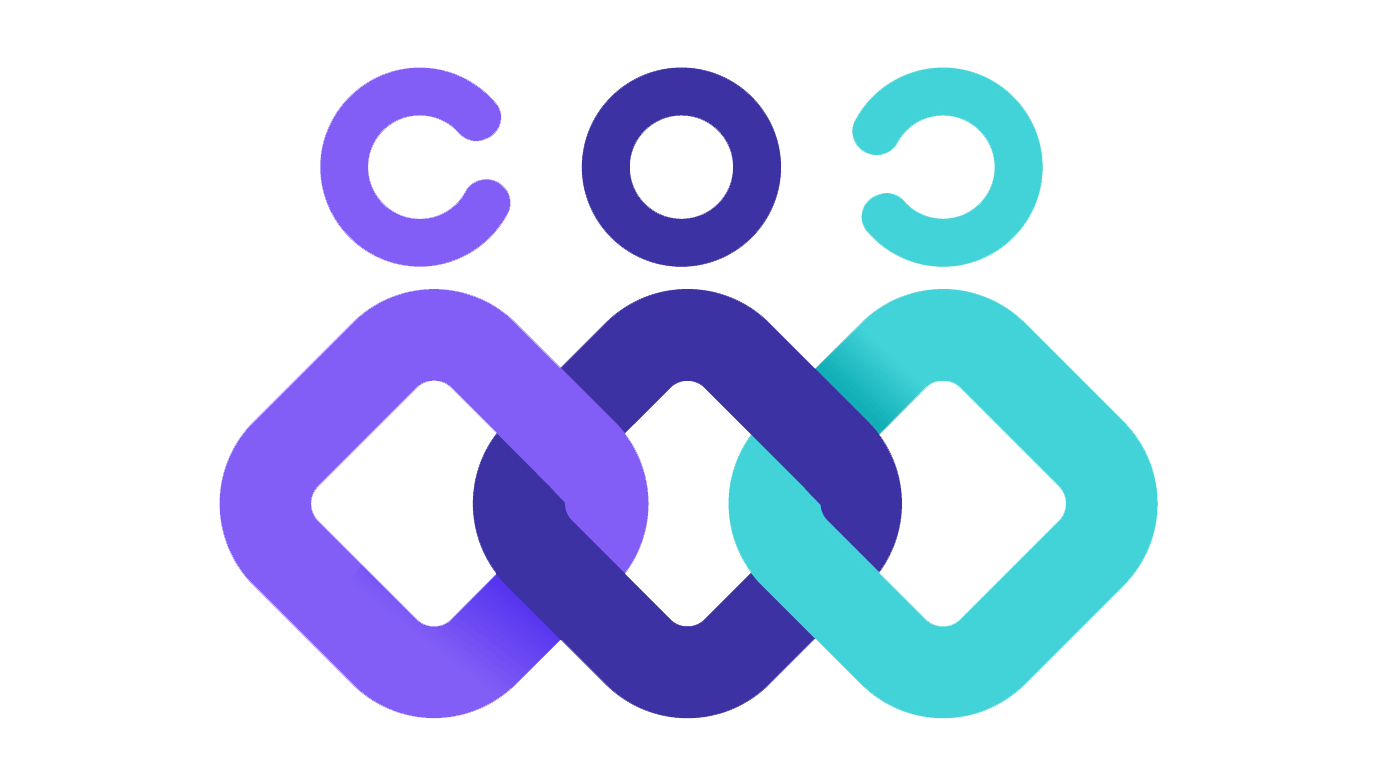- Home
- Product
-
Product Overview
Team Insight combines performance management, recognition, and local rewards in a single loop — so teams grow fairly, stay engaged, and feel valued.
PRODUCT
Employee Performance Management Software
Tools to improve performance and growth tracking.
Employee Recognition & Rewards Software
Build positivity by valuing daily wins.
Employee Engagement Software for SMEs
Drive productivity with clear access and accurate tracking.
OKR & KPI Software for Small Teams
Tools to improve performance and growth tracking.
-
- Resources
- Capture leads and make buying easySed ut perspiciatis unde omnis iste natus error sit voluptatem accusantium doloremque laudantium, totam aperiam, eaquecy epsa abillo inventore veritatis architecto beatae
- Complete documentation
- Working materials in Figma
- 100GB cloud storage
- 500 team members
- Complete documentation
- Working materials in Figma
- 100GB cloud storage
- 500 team members
 Capture leads and make buying easySed ut perspiciatis unde omnis iste natus error sit voluptatem accusantium doloremque laudantium, totam aperiam, eaquecy epsa abillo inventore veritatis architecto beatae
Capture leads and make buying easySed ut perspiciatis unde omnis iste natus error sit voluptatem accusantium doloremque laudantium, totam aperiam, eaquecy epsa abillo inventore veritatis architecto beatae- Complete documentation
- Working materials in Figma
- 100GB cloud storage
- 500 team members
- Complete documentation
- Working materials in Figma
- 100GB cloud storage
- 500 team members
Capture leads and make buying easySed ut perspiciatis unde omnis iste natus error sit voluptatem accusantium doloremque laudantium, totam aperiam, eaquecy epsa abillo inventore veritatis architecto beatae- Complete documentation
- Working materials in Figma
- 100GB cloud storage
- 500 team members
- Complete documentation
- Working materials in Figma
- 100GB cloud storage
- 500 team members
 Capture leads and make buying easySed ut perspiciatis unde omnis iste natus error sit voluptatem accusantium doloremque laudantium, totam aperiam, eaquecy epsa abillo inventore veritatis architecto beatae
Capture leads and make buying easySed ut perspiciatis unde omnis iste natus error sit voluptatem accusantium doloremque laudantium, totam aperiam, eaquecy epsa abillo inventore veritatis architecto beatae- Complete documentation
- Working materials in Figma
- 100GB cloud storage
- 500 team members
Latest Product Updates
Strong Signals
Accelerate Your Monitoring Efforts with ‘Team Insight,’ an AI-Powered Solution.
Smart Ideation
Enhance Your Creative Process with GenAI-Powered Ideation.
Knowledge Hub: Articles, Webinars...Explore our blog, webinars, and case studies to stay informed. Visit the Help Center for all the resources you needContent summary: Discover insights and expert advice through our blog to stay updated with the latest trends and solutions.
Discover insights and expert advice through our blog to stay updated with the latest trends and solutions.
Join our webinars for expert-led discussions and real-time learning from industry leaders.

Explore our case studies to see how our solutions drive success in real-world scenarios.

Visit our Help Center for quick answers, resources, and support to assist you every step of the way.
Articles, Webinars...
Explore our blog, webinars, and case studies to stay informed. Visit the Help Center for all the resources you need
RESOURCES
Blog Articles
Discover insights and expert advice through our blog
Webinars
Join our webinars discussions and learning from industry leaders.
CaseStudies
Explore our case studies
Help Center
Visit our Help Center for quick answers, resources.
-
- Success Stories
- Login
- Pricing
- Our Team
- Company
-
A Story of Growth, Trust, and Vision
Our journey is built on a commitment to empowering people and increasing employee productivity. By fostering trust and innovation, we aim to create a work environment where growth and success go hand in hand.
About Us: A team driven by innovation, focused on growth and productivity.
A team driven by innovation, focused on growth and productivity.
Contact us with any questions or feedback. Let’s boost productivity together.
A Story of Growth...
Our journey is built on a commitment to empowering people and increasing employee productivity. By fostering trust and innovation, we aim to create a work environment where growth and success go hand in hand.
ABOUT OUR COMPANY
About Us
A team driven by innovation, focused on growth and productivity.
Contact Us
Contact us with any questions or feedback. Let’s boost productivity together.
-
- Home temp

The Engagement Data Blind Spot
Employee engagement heatmap analysis is revolutionizing how small and mid-sized enterprises (SMEs) manage workforce feedback. In today’s fast-paced workplaces, tools like pulse surveys, performance reviews, and informal feedback generate vast amounts of data on team engagement. However, fewer than 30% of SMEs leverage employee engagement heatmap analysis, leaving managers with raw numbers but no clear path to actionable insights.
The challenge lies not in a lack of data but in a lack of clarity. Managers often see average engagement scores or notice dips in department satisfaction. Without employee engagement heatmap analysis, these observations remain vague, leaving critical questions unanswered: Which teams are thriving? Which are at risk of disengagement? How can leaders act before low engagement impacts productivity, retention, or morale?
Employee engagement heatmap analysis provides a powerful solution by transforming raw data into intuitive, color-coded visuals. Red highlights at-risk teams, yellow signals moderate engagement needing attention, and green showcases high-performing groups. This visual approach empowers leaders to prioritize interventions using employee engagement heatmap analysis for maximum impact.
To implement practical strategies, resources like What Is Employee Engagement? Strategies for Every Level of Your Team offer foundational guidance, while Recognition Messages for Employees Examples: 20 Scripts Busy Managers Can Use provide actionable ideas to act on heatmap insights. This article dives into how employee engagement heatmap analysis turns survey data into meaningful outcomes, covering what heatmaps reveal, how to read dashboards, set thresholds, and translate findings into short- and long-term actions.
By adopting employee engagement heatmap analysis, SMEs can bridge the gap between collecting feedback and driving impactful engagement improvements. Explore this guide to unlock the full potential of your workforce data.
What Are Engagement Heatmaps?
Employee engagement heatmap analysis starts with understanding the concept of a heatmap. At its core, a heatmap is a visual tool that uses color to represent engagement levels across teams, departments, or the entire organization. Unlike complex spreadsheets filled with numbers, employee engagement heatmap analysis allows managers to quickly spot patterns, strengths, and risks in workforce engagement.
Data for employee engagement heatmap analysis comes from multiple sources. Pulse surveys, periodic engagement surveys measuring satisfaction and motivation, and HR metrics like absenteeism or recognition frequency provide the foundation. By integrating these inputs, employee engagement heatmap analysis offers a multi-dimensional view of engagement, covering critical areas such as trust in leadership, workload balance, communication, and recognition.
In employee engagement heatmap analysis, colors convey meaning intuitively. Green indicates high engagement, signaling thriving teams. Yellow highlights moderate engagement that requires monitoring, while red flags low engagement or at-risk teams. This color-coded system makes employee engagement heatmap analysis easy to interpret, even for non-technical users.
For small and mid-sized enterprises (SMEs), employee engagement heatmap analysis simplifies data analysis without requiring advanced software. Tools like Excel or Google Sheets with conditional formatting can create effective heatmaps for small teams. These accessible solutions enable SMEs to visualize engagement trends without significant investment.
Consider a 50-person organization where employee engagement heatmap analysis reveals red blocks for the customer support team and green for the marketing team. This visual contrast immediately draws attention to areas needing leadership focus. Employee engagement heatmap analysis empowers managers to act early, prioritize interventions, and transform raw survey data into a strategic tool for boosting engagement.

What Engagement Heatmaps Actually Show
Employee engagement heatmap analysis goes beyond a simple grid of colors—it provides deep insights into team dynamics, performance, and interactions. Each color-coded cell in employee engagement heatmap analysis represents a snapshot of engagement for a specific team or dimension, revealing patterns that raw numerical scores cannot uncover.
Employee engagement heatmap analysis typically employs a traffic-light system: green indicates high engagement, yellow signals moderate engagement requiring monitoring, and red highlights low engagement or at-risk teams. These colors reflect critical dimensions such as trust in leadership, workload balance, communication, and recognition. By visualizing these factors, employee engagement heatmap analysis makes complex data accessible and actionable.
Trends are a key strength of employee engagement heatmap analysis. For example, a department shifting from green to yellow over several months may indicate emerging challenges, such as increased workload or unclear goals. In a 120-person SME, employee engagement heatmap analysis revealed a sales team dropping from green to yellow after unclear target increases. This insight prompted early intervention, including clarifying expectations and providing additional support.
Employee engagement heatmap analysis also uncovers cross-departmental patterns. Customer-facing teams, like support or sales, may show frequent yellow or red zones due to high stress levels, while creative teams might experience temporary dips during tight deadlines. These insights from employee engagement heatmap analysis enable managers to prioritize interventions strategically, focusing resources where they’re needed most.
Colors in employee engagement heatmap analysis should spark dialogue, not judgment. A red cell signals a need for investigation rather than blame. By leveraging employee engagement heatmap analysis to guide discussions, managers can uncover root causes, build trust, and implement effective engagement strategies that drive meaningful improvements.
How to Read Engagement Dashboards Without Bias
Effective employee engagement heatmap analysis requires interpreting dashboards with clarity and objectivity. A colorful dashboard can mislead without proper context. Employee engagement heatmap analysis is most impactful when managers recognize potential biases and focus on actionable insights to drive real change.
Avoid using employee engagement heatmap analysis to assign blame. Red or yellow cells signal areas needing investigation, not punishment. Managers should leverage employee engagement heatmap analysis to explore why engagement scores are low and identify the support employees need to thrive.
Common biases that distort employee engagement heatmap analysis include:
- Confirmation bias: Interpreting data to confirm pre-existing beliefs about teams or individuals.
- Overgeneralization: Assuming one low score reflects the entire team or organization.
- Ignoring context: Overlooking external factors like seasonal workloads or market pressures.
Integrating employee engagement heatmap analysis with other metrics—such as productivity, absenteeism, or turnover—provides essential context for informed decisions. For example, a red cell in workload paired with high absenteeism may indicate burnout, calling for targeted interventions.
Focusing on trends over time, rather than single snapshots, is key to successful employee engagement heatmap analysis. Multi-period heatmaps reveal systemic issues and track improvements, enabling proactive actions. By approaching employee engagement heatmap analysis objectively, leaders can make decisions that boost engagement and performance.
Setting Thresholds and Alerts
Employee engagement heatmap analysis transforms data into proactive strategies by establishing well-defined thresholds and alerts. These tools empower managers to prioritize actions based on clear engagement benchmarks. Scores of 4.0–5.0 (green) reflect strong engagement, 3.0–3.9 (yellow) indicate areas needing monitoring, and below 3.0 (red) signal urgent intervention. By setting these benchmarks, employee engagement heatmap analysis helps leaders focus on critical areas efficiently.
Alerts within employee engagement heatmap analysis notify managers when scores fall below thresholds, prompting immediate check-ins or team discussions to address underlying issues like workload imbalances or lack of recognition. For example, a red alert might highlight a team struggling with unclear goals, enabling swift action to prevent disengagement.
To ensure thresholds remain relevant, compare scores against internal averages or industry benchmarks. A yellow score in customer support during peak seasons might be expected, but the same score in quieter periods could indicate a deeper issue. Tailoring thresholds enhances the effectiveness of heatmap insights.
By combining thresholds with timely alerts, engagement analytics drive actions such as informal conversations, targeted recognition, or workload adjustments. These interventions prevent minor engagement dips from escalating, fostering a culture of continuous improvement and team resilience.
Acting on Engagement Data
Employee engagement heatmap analysis serves as a starting point, but its true power lies in transforming insights into actionable outcomes. By leveraging heatmap insights, leaders can address engagement challenges swiftly and build long-term strategies to foster a motivated workforce.
Quick Wins Employee engagement heatmap analysis enables small, high-impact actions for immediate results:
- Recognition messages: Targeted appreciation notes boost morale and reinforce positive behaviors. Resources like Recognition Messages for Employees Examples: 20 Scripts Busy Managers Can Use offer practical templates for quick implementation.
- Pulse check-ins: Short, focused conversations demonstrate leadership care and uncover issues early, such as communication gaps or workload stress.
- Micro-surveys: Brief surveys pinpoint root causes of engagement dips, providing data to refine strategies. These actions, guided by employee engagement heatmap analysis, can shift heatmap scores from yellow to green within weeks. For instance, addressing a recognition gap in a team often leads to improved engagement in the next cycle, enhancing team morale.
Long-Term Actions Sustainable improvements rely on strategic initiatives informed by engagement analytics:
- Leadership training: Developing skills in empathy and communication helps translate heatmap data into meaningful employee support.
- Process redesign: Streamlining workflows and clarifying responsibilities reduce stress, directly boosting engagement.
- Policy adjustments: Updating recognition, rewards, or career growth policies aligns with employee needs identified through heatmap trends.
- Transparency: Sharing employee engagement heatmap analysis results with teams fosters trust and encourages open dialogue. These efforts reshape organizational culture, making engagement a continuous priority.
By blending quick wins with long-term strategies, employee engagement heatmap analysis bridges the gap between data collection and measurable results, driving sustained improvements in team performance and satisfaction.

Common Mistakes to Avoid
Even the most robust employee engagement heatmap analysis can falter if common pitfalls are ignored. Avoiding these errors ensures heatmap insights drive meaningful actions rather than misguided decisions.
One frequent mistake is reacting emotionally to heatmap colors. Red or yellow zones in employee engagement heatmap analysis indicate trends, not definitive causes. Without proper context, such as workload pressures or team transitions, these colors can erode trust if misjudged. Managers must investigate underlying issues to maintain credibility.
Ignoring trends over time is another pitfall. Single snapshots in engagement analytics may reflect temporary fluctuations, misleading decision-making. Multi-period employee engagement heatmap analysis reveals systemic patterns, offering a clearer view of engagement challenges and opportunities.
Overlooking qualitative feedback weakens employee engagement heatmap analysis. Numerical scores alone lack depth—employee comments and suggestions provide critical context to explain trends, such as why a team shows persistent yellow zones in communication.
Finally, one-off actions without follow-up undermine heatmap insights. Quick fixes, like a single recognition campaign, may yield temporary gains but require consistent monitoring to ensure lasting impact. By avoiding these mistakes, employee engagement heatmap analysis becomes a reliable tool for informed, strategic decision-making.
Integrating Heatmaps with Other HR Data
Employee engagement heatmap analysis gains deeper insights when combined with other HR metrics. By integrating heatmap insights with productivity data, managers can identify whether low engagement scores correlate with reduced output, providing a clearer picture of team performance.
Overlaying absenteeism data with employee engagement heatmap analysis reveals disengagement’s impact on unplanned leave. For instance, a red zone in workload paired with high absenteeism might signal stress-related challenges, prompting targeted interventions like workload adjustments or additional support.
Turnover intention surveys or exit interview feedback enhance employee engagement heatmap analysis. A red zone in trust combined with high turnover intent highlights priority areas for action, such as leadership training or policy changes. These integrated insights make engagement analytics a powerful tool for strategic decision-making.
By combining multiple data streams, employee engagement heatmap analysis ensures resource allocation, recognition efforts, and policy adjustments align with organizational goals, driving measurable improvements in engagement and performance.
Tools and Techniques for Visualization
Small and mid-sized enterprises (SMEs) can implement employee engagement heatmap analysis using accessible tools. Platforms like Excel or Google Sheets, with conditional formatting, create color-coded heatmaps that visualize engagement levels effectively. These tools make heatmap insights approachable for teams without advanced analytics expertise.
Basic dashboards enhance employee engagement heatmap analysis by tracking trends over time, offering SMEs a clear view of engagement patterns without requiring sophisticated software. These dashboards simplify data interpretation, enabling quick decision-making.
Key visualization techniques include:
- Department-level dashboards: These focus on specific engagement dimensions, such as communication or recognition, for targeted insights.
- Trend charts: Pairing charts with employee engagement heatmap analysis provides longitudinal views of engagement shifts, highlighting progress or challenges.
- Micro-surveys: Continuous data from brief surveys feeds into engagement analytics dashboards, ensuring real-time updates.
By leveraging these methods, employee engagement heatmap analysis remains practical and actionable, empowering SMEs to drive engagement improvements even with limited HR resources.
Employee Involvement in Interpretation
Employee engagement heatmap analysis thrives when it involves two-way participation. Engaging employees in interpreting heatmap insights builds transparency and fosters trust across teams, ensuring insights reflect real experiences.
Short team sessions to review employee engagement heatmap analysis trends allow employees to provide feedback and clarify underlying causes of engagement patterns. These collaborative discussions turn data into meaningful dialogue, enhancing buy-in and accuracy.
Micro-surveys following heatmap updates complement engagement analytics by capturing employee perspectives in real-time. These brief surveys help identify specific issues, such as communication gaps or workload concerns, making actions more targeted and effective.
By centering employees in employee engagement heatmap analysis, organizations create a culture of openness. This approach ensures interventions are employee-driven, leading to higher engagement and stronger team cohesion.

Case Studies: Real-Life Examples of Heatmap Impact
Employee engagement heatmap analysis delivers tangible results in real-world scenarios, showcasing its ability to drive meaningful change. For instance, a 70-person marketing team used heatmap insights to identify yellow zones in communication and red zones in recognition. By implementing targeted recognition messages and weekly pulse check-ins, managers shifted scores to green within two months, demonstrating the transformative power of employee engagement heatmap analysis.
In contrast, a 120-person sales team overlooked yellow indicators in workload and trust within their engagement analytics. Without timely interventions, engagement declined, resulting in increased absenteeism and minor turnover. This case underscores the importance of acting promptly on employee engagement heatmap analysis findings to prevent escalation.
These examples highlight how employee engagement heatmap analysis serves as an early warning system. By addressing issues proactively, organizations can improve morale, reduce turnover, and enhance team performance, making heatmap insights a critical tool for strategic leadership.
From Data to Dialogue: Building a Culture of Continuous Engagement
Employee engagement heatmap analysis is a tool, not a complete solution. Its true value emerges when it sparks meaningful conversations across teams. Sharing heatmap insights with employees fosters transparency, builds trust, and creates an open culture where feedback is valued.
Regular check-ins and pulse surveys keep employee engagement heatmap analysis actionable, providing ongoing visibility into engagement levels. These interactions allow managers to address issues like workload imbalances or recognition gaps early, ensuring solutions align with team needs.
By aligning engagement initiatives with business goals, engagement analytics create a positive cycle of performance and morale. For example, addressing communication concerns identified through employee engagement heatmap analysis can enhance collaboration, leading to measurable productivity gains.
Turning data into dialogue through employee engagement heatmap analysis drives a culture of continuous engagement. This approach empowers teams to stay connected, motivated, and aligned with organizational objectives, fostering long-term success.
Future Trends in Engagement Analytics
Employee engagement heatmap analysis is evolving with cutting-edge technologies, offering SMEs powerful tools for proactive management. AI-powered predictive analytics in heatmap insights forecast engagement dips before they occur, enabling managers to address issues like burnout or dissatisfaction early.
Natural language processing (NLP) enhances employee engagement heatmap analysis by analyzing open-ended employee feedback. NLP detects sentiment trends, such as signs of disengagement or stress, providing deeper insights into team dynamics and informing targeted interventions.
For SMEs, these advancements highlight the value of proactive strategies. Adopting advanced engagement analytics tools, such as AI-driven platforms, equips organizations for future growth and scalability. These tools streamline data analysis, making employee engagement heatmap analysis accessible even for teams with limited resources.
By embracing these trends, SMEs can stay ahead, using employee engagement heatmap analysis to foster a resilient, engaged workforce ready for future challenges.
Advanced Tools for Engagement Heatmap Analysis
Employee engagement heatmap analysis is elevated by advanced tools that deliver deeper insights for SMEs. While Excel and Google Sheets are effective for basic needs, platforms like Qualtrics, Culture Amp, or Glint provide sophisticated heatmap insights, integrating pulse surveys, real-time analytics, and predictive models for comprehensive engagement tracking.
AI-driven platforms enhance employee engagement heatmap analysis by using machine learning to detect patterns and predict potential engagement drops. For example, AI can identify at-risk teams based on historical data, enabling proactive interventions before issues like burnout escalate.
Natural language processing (NLP) further strengthens engagement analytics by analyzing open-ended feedback. NLP uncovers sentiment trends, such as dissatisfaction or stress, offering actionable insights to address team challenges effectively.
Cloud-based dashboards in employee engagement heatmap analysis enable real-time updates and cross-departmental comparisons. For instance, a retail SME might use heatmap insights to compare engagement across store locations, pinpointing high-performing teams and those needing support. These advanced tools make employee engagement heatmap analysis scalable, empowering growing SMEs to optimize engagement with limited HR resources.
Overcoming Common SME Challenges in Heatmap Adoption
Employee engagement heatmap analysis can be challenging for SMEs due to limited resources, expertise, or employee trust. Addressing these hurdles ensures heatmap insights deliver tangible value for engagement strategies.
Limited budget: Advanced employee engagement heatmap analysis tools may appear costly for SMEs. Starting with free or low-cost options like Google Sheets allows teams to build basic heatmaps, while gradually adopting platforms like SurveyMonkey or Qualtrics for deeper engagement analytics.
Lack of expertise: Many HR teams lack advanced analytics skills. Training programs or outsourcing employee engagement heatmap analysis to consultants can bridge this gap, enabling SMEs to interpret data effectively and implement informed actions.
Employee skepticism: Teams may distrust heatmap insights if results aren’t shared transparently. Involving employees in interpreting employee engagement heatmap analysis through team discussions fosters trust and encourages buy-in, making engagement efforts more collaborative.
SMEs can overcome these challenges by piloting employee engagement heatmap analysis in a single department, such as sales or customer support, and scaling up as confidence grows. For example, a 100-person SME piloted heatmaps in its sales team, achieving noticeable morale and productivity gains, which paved the way for broader adoption.

Measuring ROI of Employee Engagement Heatmap Analysis
Employee engagement heatmap analysis delivers measurable returns when applied strategically, offering SMEs a clear path to quantify its impact. By tracking key metrics tied to heatmap insights, organizations can evaluate the effectiveness of engagement initiatives.
Productivity gains: Employee engagement heatmap analysis often correlates with improved output. For example, a team shifting from yellow to green zones in engagement analytics may achieve a 10-15% productivity increase, directly boosting business outcomes.
Reduced turnover: Addressing red zones, such as workload or trust issues, through employee engagement heatmap analysis can significantly lower turnover costs. One SME reduced turnover by 20% by acting on heatmap-driven interventions, saving substantial recruitment expenses.
Lower absenteeism: Employee engagement heatmap analysis identifies disengagement linked to unplanned leave. Targeted actions, like workload adjustments or recognition programs, can reduce absenteeism costs, improving operational efficiency.
To calculate ROI, compare the costs of implementing employee engagement heatmap analysis (e.g., software subscriptions or training) against savings from reduced turnover, lower absenteeism, and increased productivity. This approach demonstrates how heatmap insights align engagement efforts with business goals, making it a strategic investment for SMEs.
Customizing Heatmaps for Different Team Sizes
Employee engagement heatmap analysis must be tailored to team size to maximize its effectiveness for SMEs. Customizing heatmap insights ensures actionable outcomes that align with the unique needs of small, medium, or large teams.
For small teams (under 50 employees), employee engagement heatmap analysis thrives on simplicity. Tools like Google Sheets with conditional formatting allow SMEs to track key dimensions, such as communication or recognition, and quickly address red zones through targeted discussions or recognition efforts.
Medium-sized teams (50-150 employees) benefit from more granular engagement analytics. Department-level heatmaps reveal variations, such as a sales team showing red in workload while marketing remains green. Platforms like Culture Amp enable detailed employee engagement heatmap analysis, helping managers prioritize interventions across departments.
Large teams (150+ employees) require scalable employee engagement heatmap analysis. Advanced platforms like Glint or Qualtrics support cross-departmental and location-based comparisons, identifying engagement patterns across diverse teams. For example, a large SME might use heatmap insights to address regional differences in engagement, ensuring consistency.
By customizing employee engagement heatmap analysis for team size, SMEs can implement relevant, effective strategies that drive engagement and performance across the organization.
Engaging Remote and Hybrid Teams with Heatmaps
Employee engagement heatmap analysis is essential for managing remote and hybrid teams, where engagement challenges vary. Remote teams often show red zones in communication due to isolation, while hybrid teams may face workload imbalances. Heatmap insights help pinpoint these unique patterns for tailored solutions.
Using employee engagement heatmap analysis, managers can implement targeted interventions, such as virtual check-ins for remote workers or balanced policies for hybrid teams. For example, addressing communication gaps identified through engagement analytics can foster stronger connections, boosting morale across distributed teams.
Advanced tools like Qualtrics or Microsoft Viva integrate employee engagement heatmap analysis with virtual collaboration platforms, providing real-time insights. Regular pulse surveys feed into heatmap insights, ensuring engagement remains visible and inclusive for both remote and hybrid employees.
By leveraging employee engagement heatmap analysis, SMEs can create a connected, motivated workforce. This approach ensures all team members feel valued, driving performance and cohesion regardless of work arrangement.
Book a Data Walkthrough
Unlock the full potential of employee engagement heatmap analysis by diving into your team’s data. Reviewing heatmap insights helps identify trends and prioritize conversations that drive engagement. Small, consistent actions, such as pulse check-ins or targeted recognition programs, powered by employee engagement heatmap analysis, deliver significant improvements in team morale and performance.
Book a 30-minute data walkthrough to explore your team’s engagement patterns in depth. This session uncovers opportunities for immediate actions and long-term strategies, leveraging engagement analytics to align with your business goals.
Employee engagement heatmap analysis empowers SMEs to build motivated, high-performing teams. Take the first step today to transform your workforce data into actionable results.














